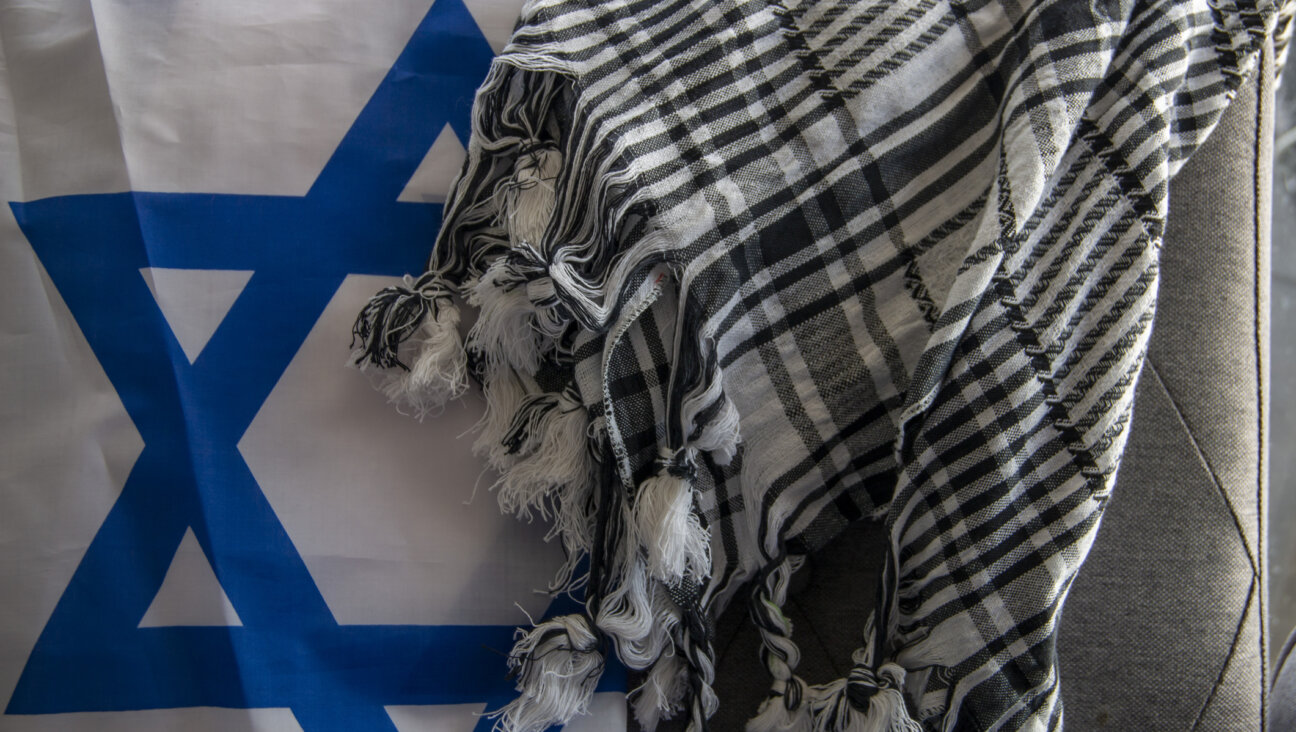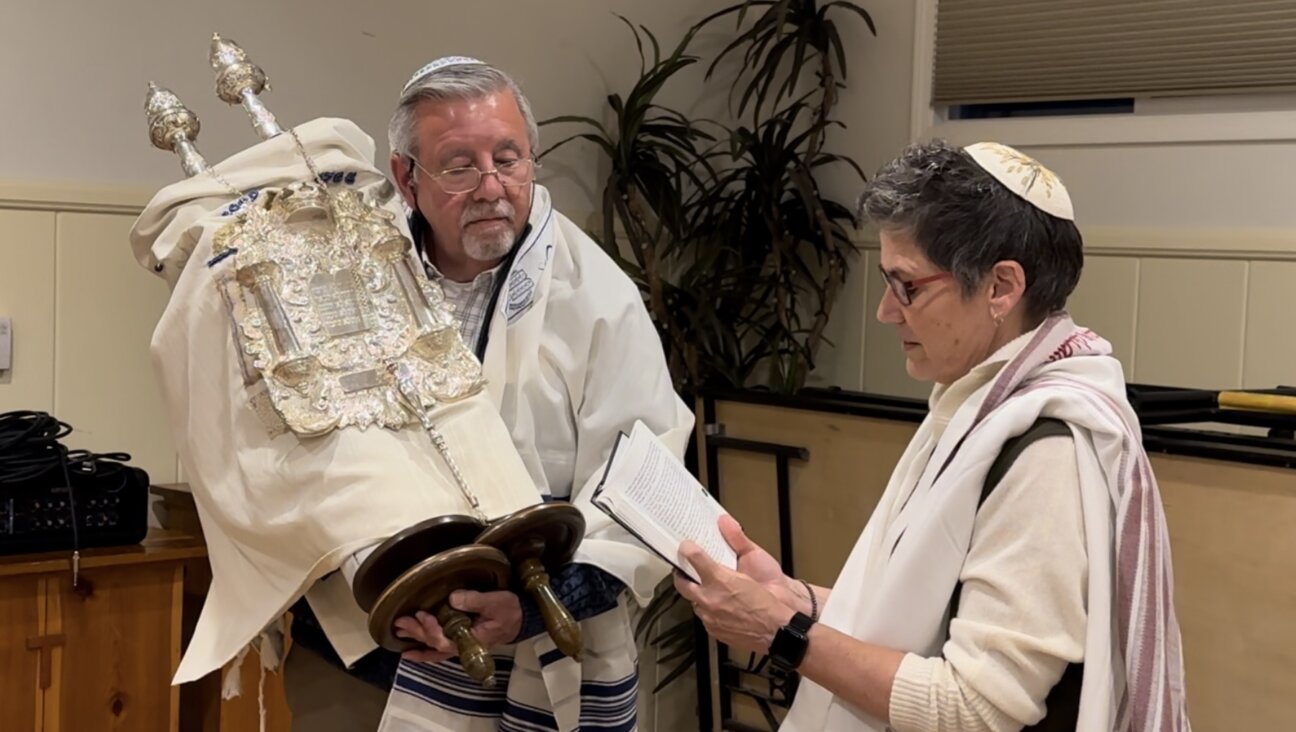A Brief on Bokser
Last week we observed Tu B’Shvat, the Jewish tree-planting day — or at least it is that in Israel, halfway through whose mild, rainy winter the earth is moist and receptive and the time for planting is ideal. As a boy in a Jewish school in New York, on the other hand, I can remember the oddity of being handed once a year a little package of dried fruit and carob pods, a reminder of the produce of the Land of Israel, and taken on an arctic day to stick a shivering sapling, which had as much chance of surviving as a goldfish in a piranha pond, into the frozen ground. Perhaps Forward reader Vera Perlman had a similar experience. In any case, she writes to ask:
“From childhood on, we celebrated Tu B’Shvat by eating ‘bokser.’ As we matured, we learned that we were eating the pods of the carob tree, known in Hebrew as the haruv. And as we became even more enlightened, we learned that the proper name for this fruit in English was ‘St. John’s bread.’ Now I have been looking high and low to learn how the Hebrew haruv morphed into the Yiddish ‘bokser.’ Can you solve the problem for me?”
Perlman’s problem is that she has been looking in the wrong place. What morphed into “bokser” was not h.aruv (whose Arabic cognate of h.arub does lie behind “carob”), but rather Bocks-horn. This is the medieval German word for the fruit of the carob tree, which was once known as a Bockshornbaum and is called in modern German — as in English — a Johannesbrautbaum.
Baum in German means “tree,” horn is horn, and a Bock is a buck, ram or goat, the word Bockshornbaum deriving from the carob pod’s hornlike texture and appearance. (For those of you who never have seen or eaten one of these exotic fruits, native to the Eastern Mediterranean, they are flattish, irregularly curved, serrated along the edges, 4 to 6 inches in length, hard as nails to bite into, and yield — if you haven’t meanwhile broken all your teeth — a sweet, mealy substance that has been described as smelling like limburger cheese.) And yet the story is actually a bit more complicated than this, for the association of carob pods with animal horns goes back to Ancient Greek and the New Testament, which explains why “bokser” is also known as St. John’s bread.
The Gospel of Matthew (the story is also in Mark) tells us that the ascetic John the Baptist, while preaching repentance and dipping absolved sinners in the Jordan, went about dressed, according to the King James Bible, in a “raiment of camel’s hair and a leathern girdle about his loins” and subsisted on “locusts and wild honey.” By “locusts” (the New Testament Greek says akrides), Matthew might have meant grasshoppers or crickets, of which the depredatory plague locust is a voraciously flocking variety that appears from time to time in great numbers. Although these insects do not strike our modern palates as edible, they are considered a delicacy by some when fried in oil, and are even listed among the kosher species in the Bible. (I once had the occasion to eat pan-fried crickets and found them digestible if rather sour.)
The complication results from the Greek akris (akrides is its plural) also having been a colloquial word for the carob pod, perhaps because the ripening pod, before reaching its full length and turning brown and hard, is a grasshopper’s size and green color. This led to the carob tree’s being alternatively known in a number of languages, English included, as the locust or honey locust tree, and encouraged the theory, popular with more squeamish Christian commentators, that the abstemious John ate not grasshoppers but carob pods. Hence, St. John’s bread and Johannesbraut.
Nor are we done with Greek yet, because the Greeks called the carob tree keratia and its fruit (besides akris) keration, words that derive from keras, “horn” and that have given the carob its botanical name of Ceratonia Siliqua. (Latin siliqua means “pod.”) And since Ceratonia Siliqua cannot withstand severe cold and did not grow in the German-speaking areas of Central Europe, Bockshornbaum cannot have been an indigenous German word and was almost certainly a translation of keratia. Thus, our Yiddish “bokser” has its roots in classical Greek.
To get back to John the Baptist, however: What was it that he ate with his wild honey — grasshoppers or carob pods? I myself am inclined to carob pods, not only because, when they aren’t plaguing, it would be difficult to catch enough grasshoppers to keep even an anorexic preacher alive, but also because saints subsisting on nothing but carob pods are a documented motif in early rabbinic literature. Thus, for example, we have the legend in the talmudic tractate of Berakhot that tells us, “Every day [God’s] voice speaks from Mount Sinai and says, ‘The whole world is nourished by my son [Rabbi] Hanina, who subsists on a quart of carob pods from one Sabbath eve to the next.” I’m glad I wasn’t Hanina’s dentist.
Questions for Philologos can be sent to [email protected].
















